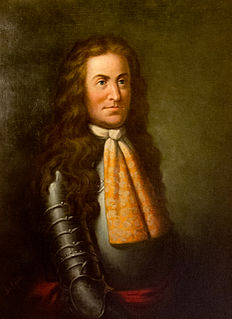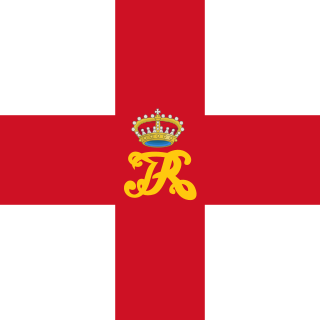
Edward Hyde, 3rd Earl of Clarendon, styled Viscount Cornbury between 1674 and 1709, was an English aristocrat and politician. Better known as Lord Cornbury, he was propelled into the forefront of English politics when he and part of his army defected from the Catholic King James II to support the newly arrived Protestant contender, William III of Orange. These actions were part of the beginning of the Glorious Revolution of 1688. As a reward, he was later appointed Governor of the Provinces of New York and New Jersey between 1701 and 1708.
Andrew Hamilton was the colonial governor of East and West New Jersey from 1692 to 1697 and again from 1699 to 1703. He also served as Deputy Governor of the neighboring Province of Pennsylvania.

The Province of New Jersey was one of the Middle Colonies of Colonial America and became New Jersey, a state of United States in 1783. The province had originally been settled by Europeans as part of New Netherland, but came under English rule after the surrender of Fort Amsterdam in 1664, becoming a proprietary colony. The English then renamed the province after the Isle of Jersey in the English Channel. The Dutch Republic reasserted control for a brief period in 1673–1674. After that it consisted of two political divisions, East Jersey and West Jersey, until they were united as a royal colony in 1702. The original boundaries of the province were slightly larger than the current state, extending into a part of the present state of New York, until the border was finalized in 1773.
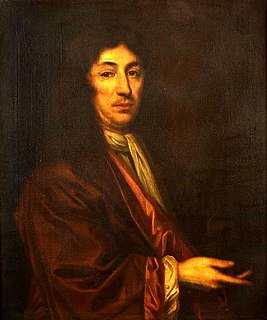
Joseph Dudley was an English colonial administrator, a native of Roxbury, Massachusetts, and the son of one of its founders. He had a leading role in the administration of the Dominion of New England (1686–1689), which was overthrown in the 1689 Boston revolt. He served briefly on the council of the Province of New York where he oversaw the trial which convicted Jacob Leisler, the ringleader of Leisler's Rebellion. He then spent eight years in England in the 1690s as Lieutenant-Governor of the Isle of Wight, including one year as a Member of Parliament for Newtown. In 1702, he returned to New England after being appointed governor of the Province of Massachusetts Bay and Province of New Hampshire, posts that he held until 1715.
A lord proprietor is a person granted a royal charter for the establishment and government of an English colony in the 17th century. The plural of the term is "lords proprietors" or "lords proprietary".
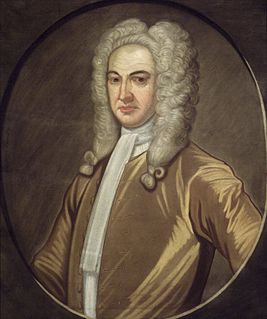
Lewis Morris, chief justice of New York and British governor of New Jersey, was the first lord of the manor of Morrisania in New York.
Edward Shippen was the second mayor of Philadelphia, although under William Penn's charter of 1701, he was considered the first. He was appointed to a one-year term by William Penn in 1701. In 1702, he was elected to a second one-year term, making him the first elected mayor of Philadelphia. He was also a leader of the Province of Pennsylvania, and served as Chief Justice of the Supreme Court of Pennsylvania in 1699. He also served as the chief executive for the Province of Pennsylvania as the President of the Provincial Council between 1703 and 1704.
Samuel Jennings or Samuel Jenings was born in England and died in Burlington, New Jersey, in 1708.

St. Mary's Episcopal Church is a historic Episcopal parish in Burlington, Burlington County, New Jersey, United States. The original church was built in 1703 and was supplemented with a new church on adjacent land in 1854. On May 31, 1972, the new church was added to the National Register of Historic Places and on June 24, 1986, it was declared a National Historic Landmark. it is within the Burlington Historic District.
The New Jersey Provincial Council was the upper house of the New Jersey Legislature under colonial rule until it was replaced by the New Jersey Legislative Council under the New Jersey Constitution of 1776.
Captain Andrew Bowne was an American colonial politician and jurist, who served in various capacities in both New York and New Jersey.
John Skene was the third deputy governor of West Jersey, part of the American Province of New Jersey, serving from October 1684 to April 1692.
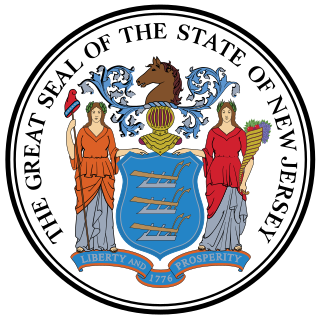
The East New Jersey Provincial Council or Governor's Council was the upper house of the East New Jersey Legislature under proprietary rule until the surrender of the right of government to The Crown, and Queen Anne's acceptance.
Colonel Daniel Coxe Jr. (1673–1739), son of Dr. Daniel Coxe, went to his father's North American lands. He lived in the American colonies from 1702 to 1716 and after returning to England published an account in 1722 of his travels and a description of the area encompassed by his father's claim, entitled A Description of the English Province of Carolana, by the Spaniards called Florida, And by the French La Louisiane.
William Pinhorne was an American colonial politician and jurist, who served in various capacities in both New York and New Jersey.

